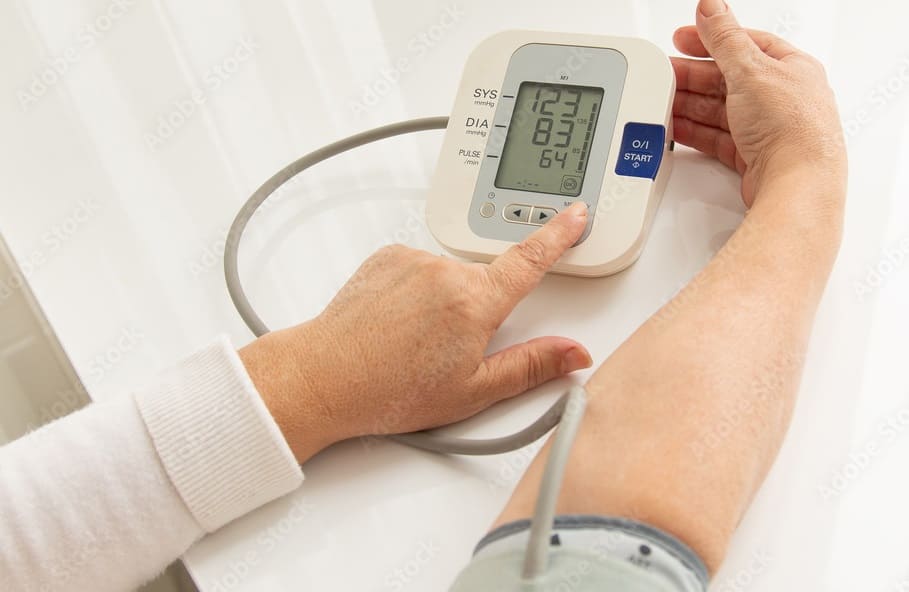Getting your blood pressure checked seems simple, but did you know that how you position your hands and arms can impact the accuracy of your reading? Many people unknowingly make small mistakes—like letting their arm hang or clenching their fist—that can lead to misleading results. An incorrect reading might cause unnecessary concern or even a missed warning sign about your heart health. In this guide, we’ll explore the best way to position your hands for the most accurate BP measurement. By following these simple yet essential steps, you can ensure that your readings reflect your true health status, giving you and your doctor the right information for better decision-making.
Why Hand and Arm Position Matters
Blood pressure measurements depend on consistent conditions. If your arm is too low, too high, or unsupported, it can alter the readings and lead to misinterpretation of your health status. Even minor variations in position can result in misleading numbers, causing unnecessary worry or missed warning signs.
Proper positioning ensures that your arteries are aligned correctly, reducing any external influence on the measurement. Incorrect arm placement can lead to false diagnoses of hypertension or hypotension, affecting your treatment plan and overall health assessment.
Correct Way to Position Your Hands During BP Measurement
To get the most accurate blood pressure reading, follow these simple guidelines:
- Sit Comfortably: Ensure you’re seated with your back supported and feet flat on the floor. Avoid sitting with crossed legs, as this can elevate your readings.
- Relax Your Arm: Place your arm on a table or armrest at heart level. Your upper arm should be supported and not hanging in the air. The elbow should be slightly bent and resting comfortably.
- Keep Your Hand Open and Relaxed: Avoid clenching your fist or tensing your fingers, as this can slightly elevate your reading by causing muscular tension.
- Ensure Your Palm Faces Up: When using an automatic BP cuff, keeping your palm facing upward helps align the arteries properly, providing a more accurate measurement. If using a manual sphygmomanometer, ensure the artery marker on the cuff is aligned with the brachial artery.
- Avoid Talking or Moving: Even minor movements or talking can cause fluctuations in your readings. Remain still and relaxed throughout the measurement.
- Remove Tight Clothing: Ensure your sleeves are not constricting your arm, as this can affect circulation and skew the results. Ideally, roll up your sleeve or wear a short-sleeved shirt for a more accurate reading.
- Rest Before the Reading: Sit quietly for at least 5 minutes before measuring your blood pressure. If you’ve been physically active or stressed, give your body time to settle.
- Use the Correct Cuff Size: The cuff should fit snugly around your upper arm without being too tight or too loose. A cuff that is too small or too large can result in incorrect readings.
- Take Multiple Readings: To ensure accuracy, take at least two readings one minute apart and record the average value.
Common Mistakes to Avoid
Many people unknowingly make these errors, leading to incorrect BP readings:
- Resting the arm too low: This can falsely elevate the blood pressure reading.
- Holding the arm up in the air: Keeping the arm unsupported makes the muscles contract, which may lead to higher readings.
- Crossing legs: This can increase blood pressure slightly.
- Placing the cuff over clothing: The cuff should be placed directly on the skin for precise results.
- Checking BP immediately after exercise or stress: This can lead to temporarily elevated readings that do not reflect your normal blood pressure.
- Using an improperly placed cuff: Make sure the cuff is positioned correctly on your upper arm, about an inch above the elbow.
- Measuring BP at different times of the day without consistency: Blood pressure fluctuates throughout the day, so it’s best to measure at the same time daily for comparison.
The Takeaway
Small adjustments in hand and arm position can make a big difference in obtaining an accurate blood pressure reading. The next time you check your BP, ensure your arm is properly supported, your hand is relaxed, and your palm is facing up. These simple steps can help you and your doctor get the most reliable measurements to monitor your health effectively.
By following these guidelines, you’ll be more confident in your readings and avoid unnecessary health concerns due to inaccurate measurements. Stay informed, stay healthy, and always check your BP with the correct technique to get the best insights into your heart health!
Also Read:
